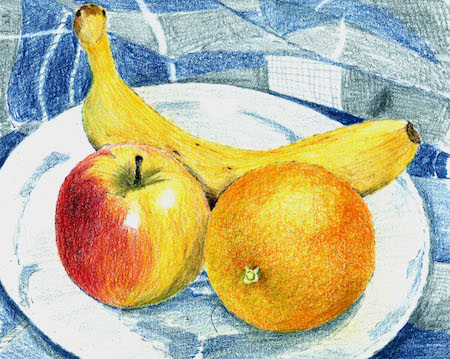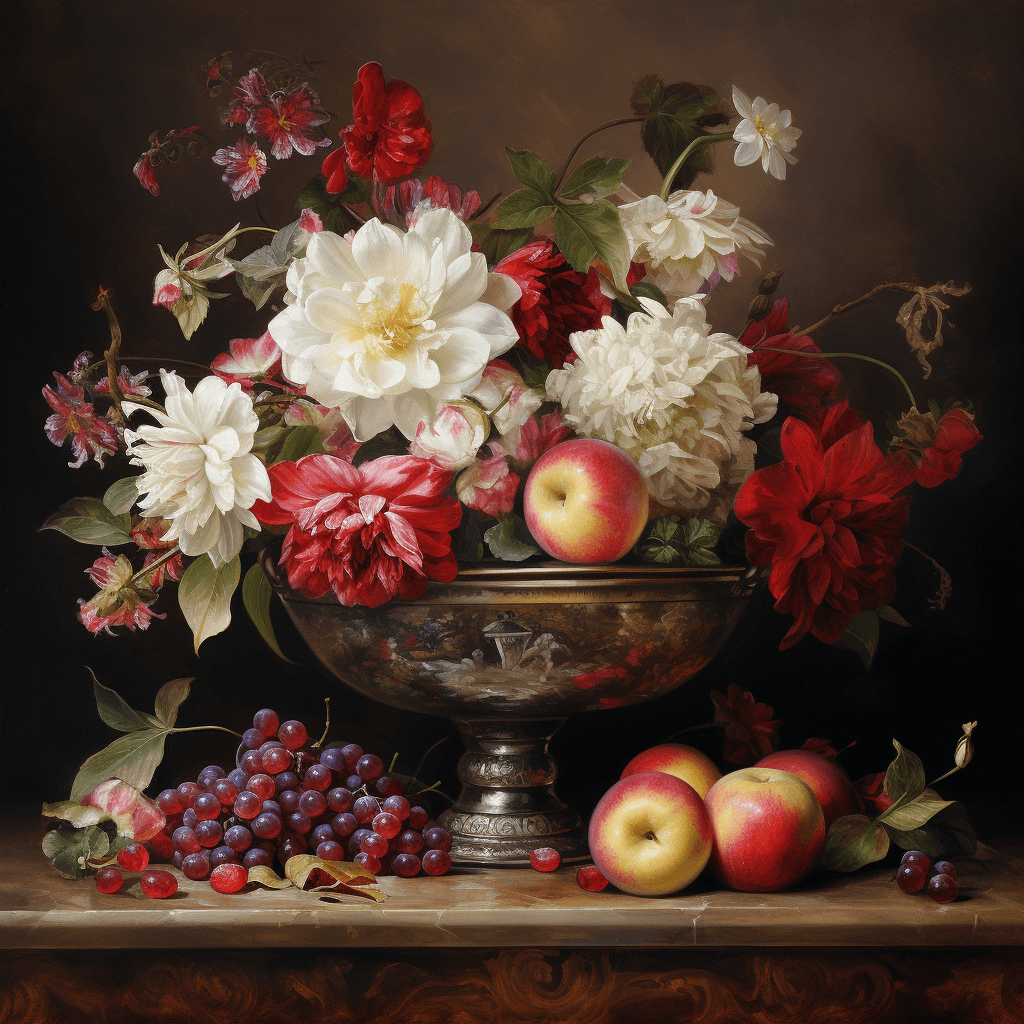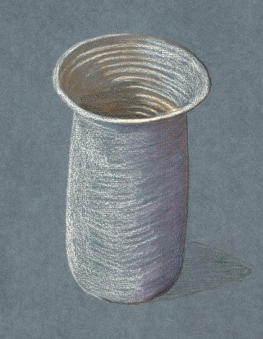- Home
- Still Life
Composing a beautiful still life pencil drawing
To make a good pencil drawing, study the composition and think about what you want to express.
Introduction
In the art world, sketching with a pencil can turn ordinary objects into dazzling still life stories.
This guide examines everything from picking and organizing items to precise attention to light, viewpoint, and details. We uncover the process of changing the common into the remarkable.
Whether you're a seasoned artist or just starting, you can gain invaluable insights to enhance your ability to perceive, organize, and capture the silent charm of still life in pencil.
Creating a Captivating Composition
When creating a still life pencil drawing, artists arrange various objects on a flat surface or against a captivating backdrop.
These objects have been carefully selected to evoke specific emotions in the viewer.
This thoughtful choice and set-up of objects adds mystery to the artwork, making it more than just a simple picture.
Pick your main subject, ensuring it takes center stage. Include other elements that either bring out or amplify the overall mood. Set up the composition carefully to make sure it's visually striking and achieves the artistic effect you want. Lastly, weave in important details to spice up the drawing.
Of course, there's more to this than what's seen at first glance. So, let's explore this further.
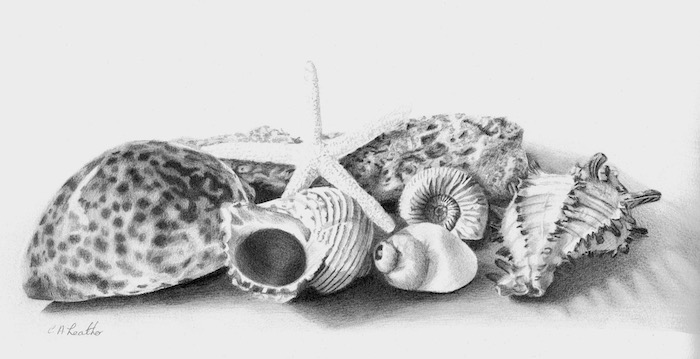 Purchased souvenirs of various vacations, collected into a still life that brings back memories
Purchased souvenirs of various vacations, collected into a still life that brings back memoriesChoosing the Right Format and Focal Point
Picture format
The layout of your canvas greatly influences where you place objects in your art. A vertical, longer edge gives you a portrait-style piece, while a horizontal, longer edge creates a landscape-style image.
To find the best layout for your art, try using a cardboard viewfinder with a square, rectangular, or circular hole. This easy tool helps you frame your composition with the right proportions. Just hold it and observe your object arrangement through the hole to see how they would fit best on the paper.
When deciding on the format for your drawing, it's important to consider how it can significantly impact the overall appearance.
The items you have in your still life can influence your choice.
For instance, if the majority of the items are tall, a portrait-style drawing might be the most suitable option. On the other hand, if the objects are wider or if you want to showcase a panoramic view, a landscape format would be more appropriate.
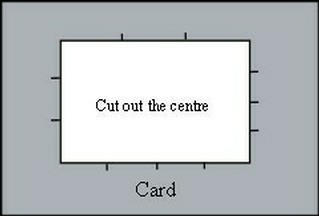
Focal point
The main attraction, or focal point of your sketch, is vital. It's what first draws a viewer's eye, inviting them into your artwork. Different methods, like contrast in color, size, or form, can create this. The standout feature doesn't need to be smack in the middle of your work, but should guide the eye throughout your still life sketch.
To set up an effective focal point, think about positioning objects to form lines pointing towards it. Lighting can also emphasize it. Keep in mind, the focal point should pop without overshadowing the rest of your artwork.
Here, balance is key. Achieve it by identifying a focal point and setting up all other elements around it. Take the time to arrange and rearrange your objects until you find the most eye-catching and pleasing composition
A great picture should pull in the viewer, making them feel as if they're part of the scene. To do this, you need to be strategic about what to include in your drawing and what to leave out.
Beginners often clutter their pencil sketches with too many items.
Experienced artists, on the other hand, pick fewer, impactful objects for a balanced and attractive artwork. The key is selecting the right pieces and ensuring your artwork doesn't seem too busy or messy.
Remember, less can be more when it comes to art. Don't be afraid to let empty spaces speak in your composition. This approach can help to highlight the items you've chosen to feature.
Choosing the right objects for your drawing requires careful consideration. Think about what each item symbolizes, and how it contributes to the overall message or feeling you want to convey. It's not about how many items you can cram into the scene, but rather about the deeper meaning and connection between the items you choose.
Also, keep in mind that a well-organized composition is key.
A cluttered or disorganized drawing can distract the viewer and dilute the impact of the artwork. Try to arrange your objects in a way that guides the viewer's eye through the scene, creating a visual journey that complements the story you're trying to tell.
Finally, don't underestimate the power of details.
It's the little things that can bring a drawing to life, adding realism and depth. So, take the time to observe your chosen objects closely. Notice the way the light hits them, the texture of their surfaces, the shadows they cast. These are the things that will make your drawing feel real and alive.
Adding Detail and Creating Depth
Make sure your main subject is clear and well-placed in your drawing. Adding detail to your subject will draw the viewer's eye and encourage them to look closer. The other objects should be less detailed.
Try placing objects at different angles and distances. This can give your drawing a sense of depth, making it more attractive and lifelike.
You might want to put some objects closer, with others further away. This near-and-far game not only gives more depth but also keeps the viewer's eyes moving around your work.
Using light is another good way to add depth. Changing the direction and strength of the light can create interesting shadows and highlights. This helps your drawing feel three-dimensional. Even small changes in light can hugely change the mood and feel of your drawing, so try out different things!
And don't forget the small details! Even tiny things like cracks, dust, reflections, and shadows can greatly improve your drawing. Viewers will be surprised when they look closer.
Creating depth in your drawing isn't just about making it look real. It's also about stirring feelings and sparking interest.
So take your time, try different methods, and most of all, have fun!
After all, art is a journey, not a destination.
Considering Viewpoint and Lighting

Once you've set your still life items, choose your viewpoint. Where do you want your eye level to be? Do you fancy an overhead view, or would you rather draw from a seated or standing position facing the objects? Both methods work, but your selected viewpoint influences how viewers interpret your sketch.
Also, consider how close you place your objects as it impacts your sketch's perspective and changes how you perceive the items in it. A nearer viewpoint creates a more intimate and immediate style, whereas a more distant setting results in a more detached, observational effect.
After locking down the perfect viewpoint, it's useful to snap a photo for future reference. This helps if your subject is perishable and might lose its freshness over time. A photo is also handy if you plan to use natural light, which changes throughout the day, affecting the shadows in your composition.
Considering that colored pencil still life sketches often take many hours to complete, artists using this medium generally prefer to draw inspiration from photographic references.
 For this drawing of ceramics made by my children when they were at school, I decided to position myself a short distance in front, allowing me to see the pebble "footpath" between the houses.
For this drawing of ceramics made by my children when they were at school, I decided to position myself a short distance in front, allowing me to see the pebble "footpath" between the houses.Lighting the still life
Choosing the right light is as crucial as picking the objects and layout.
Play around with different lights and placements to find the one that brings out your subject's specifics best.
A portable light, like a lamp or torch, lets you control the light's direction and power, creating striking contrasts and appealing shadows. If you need to move the light during the drawing, snap an extra picture to remember its spot in relation to your setup.
If you fancy natural light, you might find that the best light appears at a certain hour. If this suits your drawing routine, fantastic! If it doesn't, snap a picture to keep that perfect light alive.
Utilizing negative space
Negative space in drawing refers to the empty areas around or among objects. It's crucial in a composition and should be cleverly employed to guide the viewer's gaze across the whole piece, not just a single detail or area.
In still life art, negative space can be used effectively in various ways.
For one, it can highlight the main subject. By leaving a notable amount of space around your focus, you can make it pop. This method works especially well when the backdrop or surrounding items are detailed or complex.
Secondly, negative space can establish balance and harmony.
By smartly distributing vacant space across your piece, you can introduce a sense of stability that is visually satisfying. But it doesn't mean that the negative space has to be uniformly dispersed. Depending on how your objects are placed, you might choose to allocate more negative space in one spot to offset a group of objects elsewhere.
Next, blank space can enhance depth and dimension. For example, a clear area can suggest an item fading into the backdrop, while a detailed area brings it to the forefront.
Additionally, blank space can shape the mood and atmosphere of your sketch. Lots of clear space can convey calm and peace, while scarce blank space can trigger feelings of tension or chaos.
Finally, blank space can be used for crafting intriguing shapes and patterns. Sometimes, the forms made by the gaps between items can be just as mesmerizing as the items themselves. By noticing and weaving these shapes into your sketch, you can introduce an added layer of intrigue and intricacy.
Bear in mind, blank space is not merely lack of items; it's a critical component of your composition demanding thoughtful consideration and arrangement. So, don't overlook it; instead, exploit it! Delicate details or shifts in shade can enrich these areas and enhance your sketch's overall appeal.
Showing volume and shape in a still life pencil drawing
Picking the right light to bring out your subject is key, but the shadows it makes are just as important. Shadows add a touch of realness and depth to your art.
In a pencil sketch, dark shadows shape the look and feel of your piece. They emphasize certain parts, adding depth and mystery. Plus, they create a 3D effect, making it look deeper by focusing the viewer's gaze on the mix of light and shadow on your subject.

Look at how the shadow on the apple forms a clear difference to the lighter parts at the top and right, highlighting its roundness. Even though it's printed on a flat surface, the apple seems to pop out.
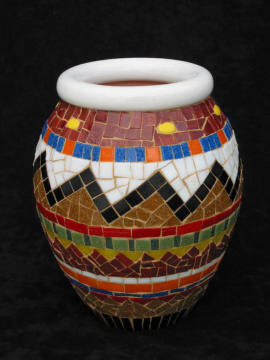
Patterns and lines on some items suggest they're not flat. Notice how the vase's decorations lead your eye around its shape. The view from the lower bands makes it look even more round.
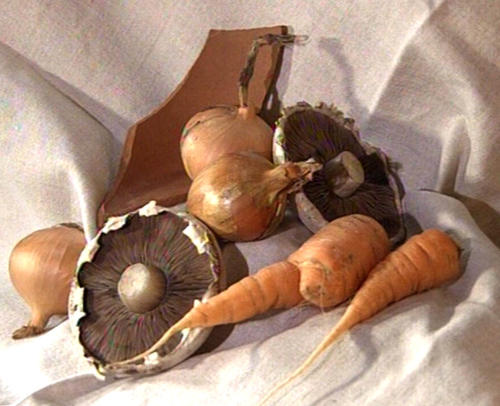
Ultimately, by observing the shadows and marks on the carrots, the lines on the onion skins, and the gills on the mushrooms, we would be able to add depth and dimension to a pencil drawing based on this photograph.
The background
Often overlooked, the backdrop of your pencil sketch holds immense value. It's the magic element that weaves your composition into a cohesive unit and sets the mood of your art piece. It can help to create a sense of depth and space, or work to highlight and enhance the main subject of your drawing.
Think of the background as the stage on which your still life is set.
It should harmonize with the objects, not dominate them. A subdued hue for the backdrop can make your subject pop, whereas a darker shade can stir up a cozy or intense ambiance.
Picture a bowl full of colorful, fresh fruits standing out against a simple, plain backdrop. This contrast makes the fruits the center of attention.
On the other hand, a vase of pastel flowers against a dark, moody background can evoke a sense of mystery and allure.
A strategic background can add meaning and story to your artwork. A weathered wall behind a vintage clock might hint at nostalgia or the flow of time. A cheery, bright backdrop could signify newness or energy when coupled with a vase of daisies.
Final touches
After sketching your items, observing the empty spaces, demonstrating three-dimensionality, and thoughtfully planning your backdrop, it's time to add the cherry on top.
The final embellishments might involve enriching your items with texture, intensifying the shadows to amplify depth, or tweaking the highlights for an extra pop of contrast. Perhaps you'll choose to sharpen your subject's outlines for a razor edge look, or blur them for a dreamier effect.
Let's not forget, art is a personal journey, with no fixed rules or guidelines. The secret sauce lies in relentless practice and exploration. Stick with it, keep experimenting and you'll find you'll develop your skills in still life pencil drawing.
Try it yourself
Ready for some fun? Try out one of our tutorials, like The Fruit Bowl or The Sweet Jar to practice what you have learned.
These interactive lessons offer a hands-on approach, allowing you to apply your knowledge in a lively, practical setting. You don't just learn - you experience!
And as you navigate through these creative scenarios, you'll discover the joy of learning, the thrill of accomplishment, and the satisfaction of seeing your skills grow right before your eyes.
A still life pencil drawing is a voyage of discovery, a trip that calls for patience, meticulousness, and a keen eye. It's about turning everyday items into compelling tales, seizing the heart of quiet moments, and making them into timeless works of art.
Each pencil line you sketch, each item you choose, and each shadow you create, narrates a story. Your story. As you follow this path, don't fear experimentation, making mistakes, or learning from them.
Look around, find beauty in daily items, and begin crafting your still life masterpiece. From a fruit bowl on your kitchen table to a stack of your cherished books, the opportunities are infinite.
So, grab your pencil, arrange your objects, and free your creativity. Craft something stunning.
Remember, it's not only about the final product, but also the journey you undertake to reach it.
Enjoy your drawing!
